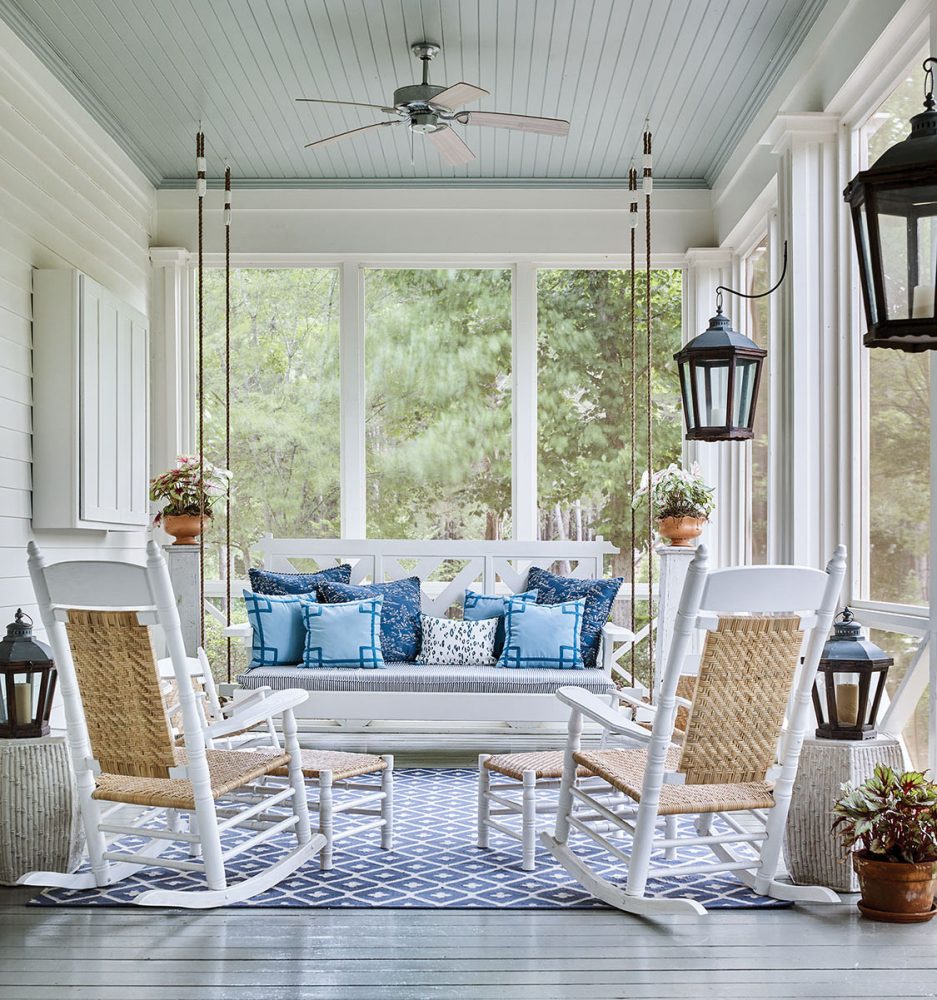
Wikimedia Commons
A painting by Antoine-Jean Gros (1808) of Joséphine in a dress made of Kashmiri paisley.
Years ago, I read The Man Who Painted Roses by Antonia Ridge. In this book about the life of Pierre-Joseph Redouté, often referred to as the Raphael of flower painters, I learned of a tree gifted to him by Empress Joséphine—a cedar of Lebanon that was planted at his home in Meudon, close to Paris. Intrigued, I sought out the tree on a visit to France. Located on private property but visible from the hilltop where I stood, this majestic symbol of strength is now in its 200th-plus year.
Many believe this tree embodies the strong bond between the artist and his patron. Redouté became Joséphine’s most significant and steady advisor on matters of art and the garden. His most famous work, “Les Roses,” a three-volume set with 170 hand-colored plates, was published after Joséphine’s death but was originally inspired by the empress and her garden. While Joséphine did not show much interest in roses during her early years of gardening, she later became enamored with the flower. Thanks to her acquisitive nature, 250 new varieties of roses were introduced to France. In addition, André Dupont, Joséphine’s horticulturalist, introduced 25 new cultivars through his pioneering method of controlled pollination.
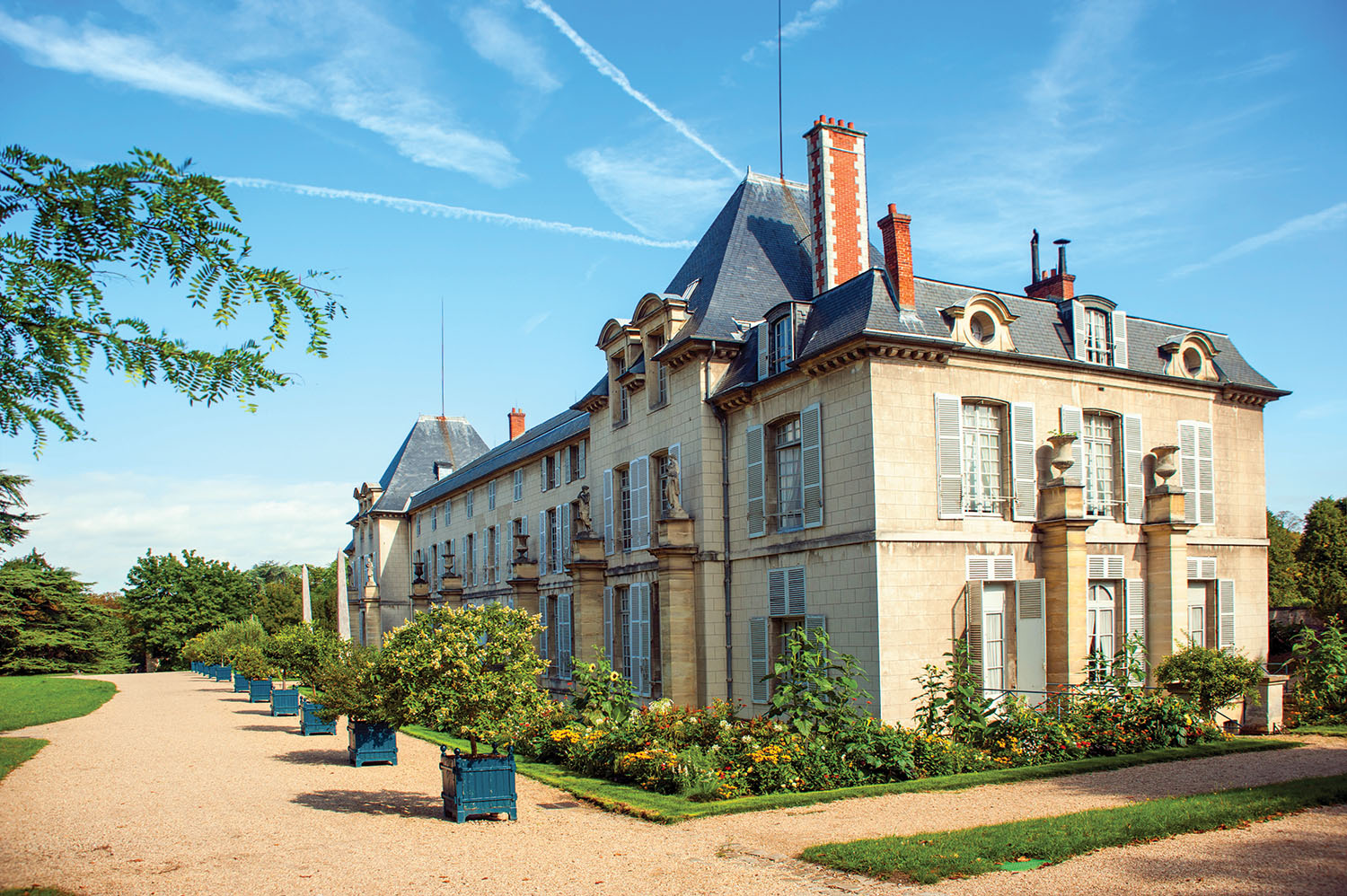
Photo by Stephen Phraner | Shutterstock
Château Malmaison.
Prior to marrying Napoleon, Joséphine was married to Alexandre de Beauharnais, a philanderer who was rarely at home. While she did have two children with him, she never felt settled and content. In some way, this may explain her dedication to creating a beautiful home and a horticultural phenomenon at Malmaison, the chateau she shared with Napoleon. The surrounding landscape park contained follies, pavilions,and other greenhouses filled with plant specimens. Unusual animals from around the world roamed the park amidst this botanical wonderland. Joséphine became identified with her red-beaked black swans from Australia, the rarest animals in her menagerie. Later the swan would become an emblem of the empress and could be found adorning furniture, engravings, and embroideries.
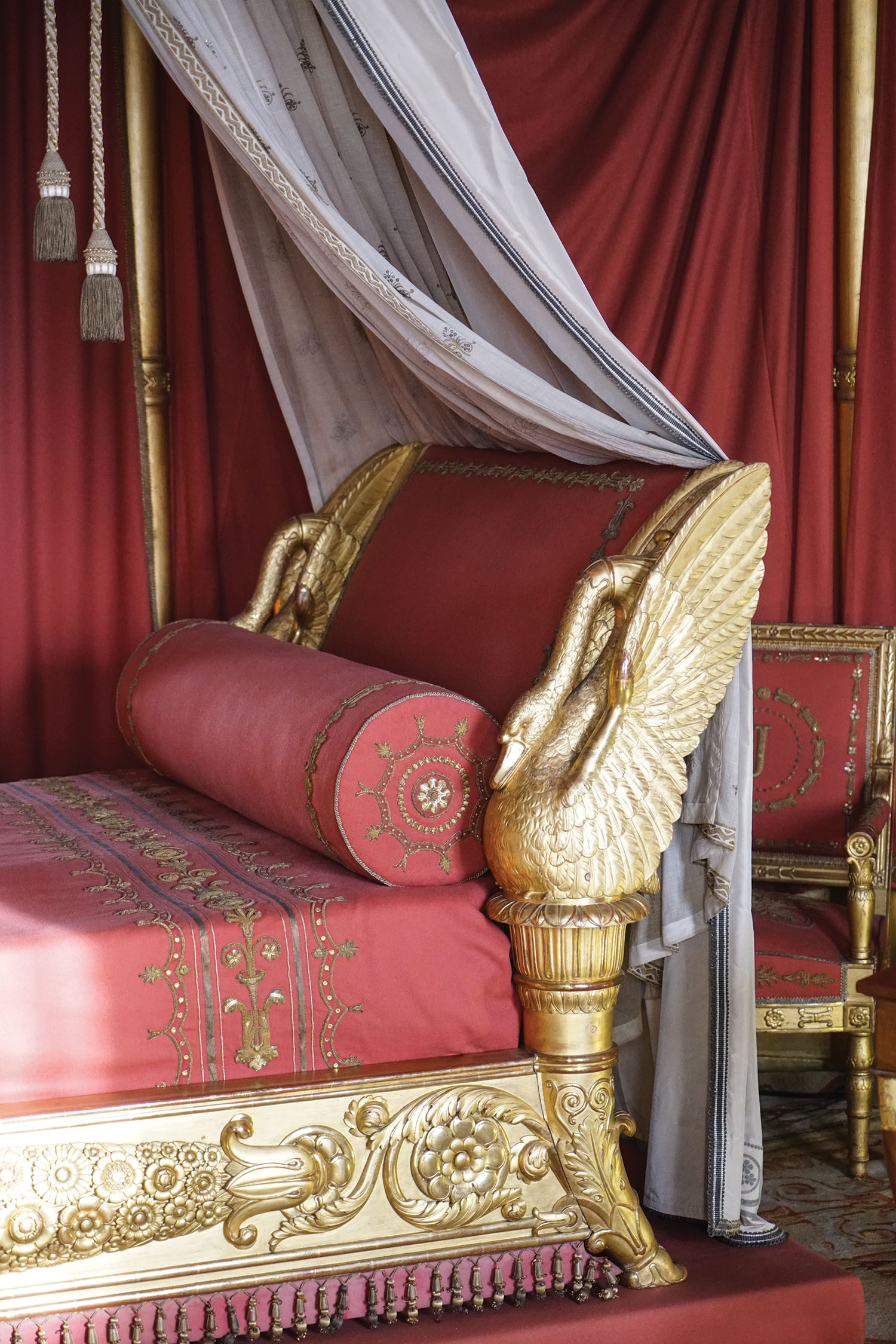
Photo by Charlotte Moss
Joséphine's bed at Malmaison, made by the renowned ébéniste François Honoré-Georges Jacob-Desmalter, features the swan which became an emblem of the empress
By Pierre-Joseph Redouté
One of Redoute's hand-colored engravings from "Les Roses."
When Napoleon and Joséphine married, everyone in Napoleon’s circle— from sea captains to ambassadors to foreign leaders—was encouraged to send or bring botanical specimens to Malmaison. The gift of plants earned favor with the ruler of France while simultaneously helping Joséphine build her gardens and fill her greenhouses with varieties from around the world, many of which had never been cultivated in Europe.

Photo by Charlotte Moss
The metal tent entry at Malmaison was designed by French architects Charles Percier and Pierre Fontaine.
The first seeds the empress received were from her mother living in Martinique, who sent mauve bougainvillea, sugar cane, and the beautiful blue myosotis. Joséphine’s Magnolia macrophylla came from the banks of the Catawba River in North Carolina as a result of the exploration of André Michaux. The blue Lily of the Nile, Agapanthus umbellatus, was brought to her by botanists who accompanied Napoleon on his Egyptian campaign. Sir Joseph Banks gifted the empress Nicotiana undulata. The German naturalist and polymath Alexander von Humboldt ventured on a five-year voyage with Aimé Bonpland that brought lobelias, mimosa, and heliotropes. And even Napoleon, while on campaign, sent over 800 specimens from Schönbrunn in Austria, including eucalyptus, hibiscus, dahlias, and rare tulips.
And then there were the two plants named for Joséphine—Brunsvigia josephinae (a coral amaryllis from South Africa) and Lapageria rosea (the Chilean bellflower).
Her greenhouses also featured fan palms, bananas, Indian bean trees, lemons, and Seville oranges. Between 1803 and 1805, Joséphine built the Château de la Petite Malmaison, which consisted of a reception pavilion attached to a greenhouse. Measuring approximately 164 by 62 feet, it was the largest structure that had ever been built of glass at that time in France. While the pavilion no longer exists, it was without a doubt the precursor of the glass-and-steel structures that followed in the 19th century.
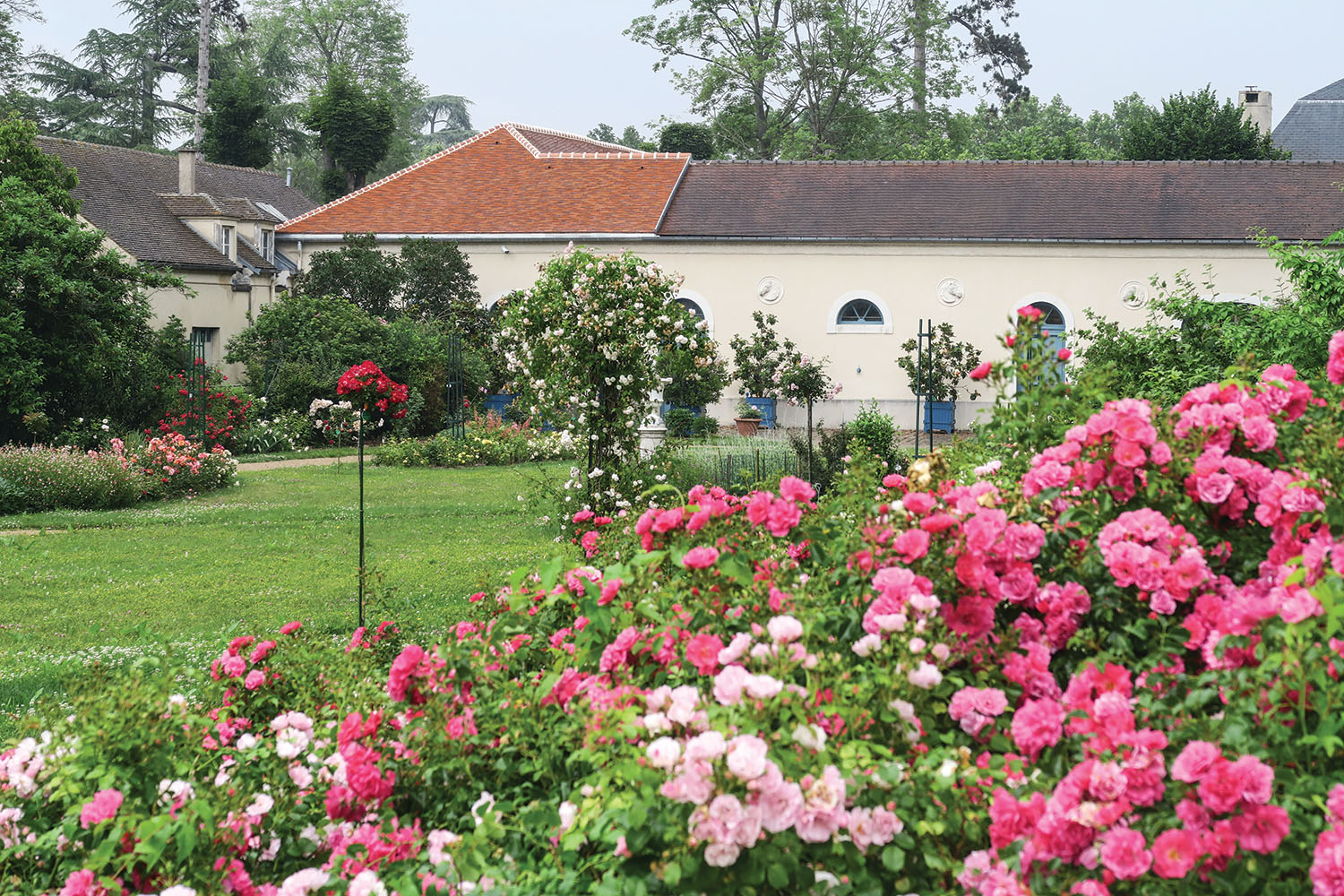
Photo by Charlotte Moss
Malmaison at the height of the season is an homage to Joséphine's love of roses.
Joséphine was a romantic who preferred le style anglais. Like the philosopher Jean-Jacques Rousseau, she believed in a naturalistic approach to gardening with winding paths, ponds, and mixed borders. In addition, Joséphine adapted Humphry Repton’s idea of locating flower gardens close to the house. These maneuvers in the garden garnered her a reputation of being a radical. Thanks to her imagination and determination, both reinforced by the enormous resources of an empire, the empress established a special place for Malmaison in garden history. After only five years of marriage, Napoleon chose to divorce Joséphine due to her inability to produce an heir. However, his love for the empress never waned. Joséphine was distraught over the end of the marriage but eventually came to terms with it and lived the remainder of her life at her beloved Malmaison.
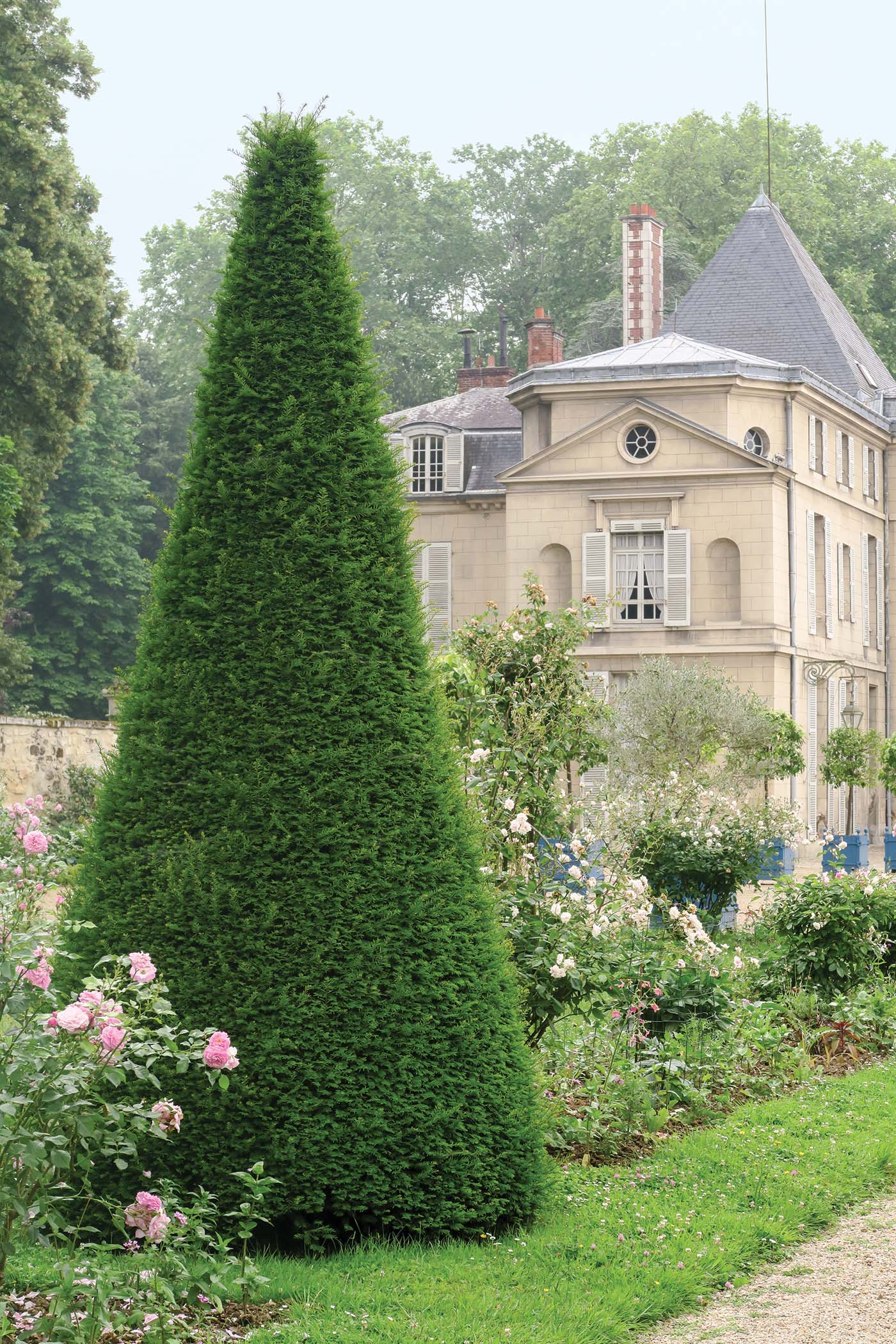
Photo by Charlotte Moss
Conical-shaped yews punctuate the beds of roses on the approach to the chateau.
Perhaps author David Stacton best describes Joséphine’s state of mind at that time in his book, The Bonapartes: “… she accepted divorce, she accepted banishment, she accepted everything, but she would not accept removal from Malmaison.” It was there that the empress unexpectedly died from pneumonia on May 29, 1814, Aimé Bonpland at her side. Later, Bonpland wrote to his sister, “… the death of the Empress … came like lightning … (it) has altered my life completely.” Upon hearing of Joséphine’s death, Napoleon, living in exile on Elba, did not leave his room for two days.
By Charlotte Moss
With a lifelong love of gardening, designer Charlotte Moss has long been intrigued with what draws people—especially women—into the world of horticulture. Some have made it their professions, while others have become enthusiasts, patrons, philanthropists, or simply weekend hobbyists. And then there are those who write about all things gardening. In her new column for FLOWER, Charlotte explores some of these women and the journeys that led to their passions for plants and flowers. She also has a forthcoming book with Rizzoli on the subject of gardening women set to release spring 2025.


